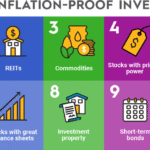📉 Understanding Value Investing
Value investing focuses on identifying stocks trading below their intrinsic worth—often measured by low P/E, P/B, P/FCF, or high dividend yields—and patiently waiting for the market to recognize their true value. It’s a strategy popularized by Warren Buffett and Benjamin Graham, predicated on disciplined valuation analysis rather than short-term growth narratives
1. Why Value Investing Is Returning
🔍 Valuation Disparity in U.S. Markets
The U.S. stock market, especially the S&P 500, is extremely concentrated—the top three tech stocks now constitute roughly 20% of the index, compared to 8% in the Russell 1000 Value Index The valuation gap is colossal: overall market P/E is in the low 20s while many value-oriented portfolios trade much lower. Bill Nygren (Oakmark) calls this disparity “unusual” and argues it benefits value investors
📈 Recent Focus on Valuation
In early 2025, markets have swung toward high volatility (VIX >18.5), a backdrop where valuation-based strategies historically perform best From Jan–Mar 2025, Deep‑Value and general Value quintiles in the S&P 500 outpaced Growth—returning +16.1% and +3.35% respectively—while Growth lagged, highlighting shifting investor priorities
🌍 Global Value Trends
While U.S. value stocks have underperformed domestically, international markets show strong value-led gains. Analysts suggest U.S. investors may benefit by incorporating foreign value equities into portfolios .
2. What’s Driving the Resurgence
🔁 Rotation from Growth to Value
The long-standing dominance of growth and tech, buoyed by AI breakthroughs, may be giving way to rotation. Tech outperformance has foreshadowed value rebounds historically
💸 Rising Rates & Inflation Sensitivity
With interest rates normalized, defensive sectors like financials, energy, and industrials often outpace high-growth stocks. Value tends to outperform when bond yields exceed ~3%
🌀 Macro Volatility
Uncertainty, from tariffs to geopolitical risks, increases volatility—a condition under which value tends to shine. High-VIX periods often favor valuation discipline over speculative growth .
3. Evidence Value Works: Data & Research
📊 CFA Historical Outperformance
Studies repeatedly show value investing generating long-term premiums. For instance, value stocks delivered annualized returns of ~15.1% (Conservative Formula strategy) versus ~9.3% for benchmarks, with lower volatility
🧠 Reddit Insights
Retail investors report strong results. One user commented:
“I began value investing in 2013…my performance has consistently beaten the market with a 24–26% average annual return.”
Quantitative correlation between valuation factors and returns also supports value investing: e.g., Book/Price correlates ~0.306 with annualized returns across 1980–2023
4. Where Value Opportunities Are Emerging
🏦 Financials
Bank stocks surged recently, with KBW Bank Index up ~25%, supported by deregulation and higher rates
⚙️ Energy & Industrials
Energy rebounded strongly (+35% YTD as of Dec 2024)—value investors see potential upside amid underweight positioning Industrials and utilities gain renewed interest as interest rates normalize .
💊 Healthcare & Materials
Deep Value outperformance includes healthcare and materials segments, which trade at low valuations with stable fundamentals
5. Risks and Counterpoints
⚠️ Growth’s Strength Continues
Growth and AI stocks remain powerful—Sanctuary Wealth forecasts a 12% S&P 500 rise driven by AI Barron’s notes growth still outperforming value over recent decades
⚠️ Elevated Market Valuations
The S&P is trading at ~22–23x earnings—levels historically associated with muted 5-year returns under 5% Dense valuations require careful stock selection, not blanket value allocations.
⚠️ Need for Active Selection
Value is not a passive index play. Managers must avoid value traps (low valuations for valid reasons) and target quality value with catalysts
6. How Investors Can Use Value Now
✅ Diversified Value Allocation
Consider overweighting value via ETFs (e.g., IVE, VTV) or active mutual funds. A balanced approach: 50% Growth / 50% Value may guard against one-sided exposure .
🏛️ Blend with Growth
Combine dividend-paying value stocks with high-quality growth and thematic exposures like AI/cloud for balance.
🕵️ Active Management
Engage with managers focused on fundamentals, valuation, catalysts, and macro risks rather than blind factor tilts
🌐 Go Global
Explore international value equities, which often trade at steeper discounts relative to the U.S.
7. Case Studies: Value Winning in 2025
🏦 Banks
Financials enjoy major earnings momentum. KBW Index +25%, while top U.S. banks continue strong earnings—analysts optimistic despite price pressure
🛢 Energy
Energy sector underrepresentation (3% in S&P vs. >10% in 2010) positions it for value-led rebound
📦 Industrials & Materials
Value archetypes like industrials and commodity-driven sectors, with low valuations and stable earnings, are beginning to outperform
8. Is It Too Late to Get In?
- Valuation spread remains wide—value stocks continue to look cheap relative to overall market
- Volatility may persist, but this offers entry points for patient investors.
- Factor timing matters—value tends to thrive in early expansion and normalization phases, which aligns with current macro trends
9. Bottom Line
- Value investing is resurgent in 2025, supported by valuation dislocations, macro and volatility dynamics, and sector rotation.
- International value offers further upside, complementing cyclically sensitive sectors like banks, energy, and industrials.
- Blend value with quality growth, emphasize active selection, and maintain a global perspective.
🟢 Final Verdict
For disciplined investors, 2025 appears to be a favorable environment to overweight value—anchored in fundamentals and supported by macro dynamics. But success depends on selecting the right stocks or managers, staying patient, and balancing with growth exposure.


